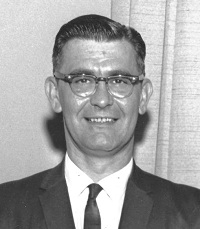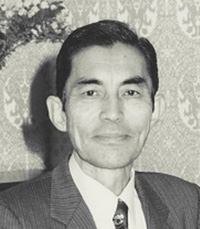History
History
Professor Richard M. Fulrath of the University of California, Barkley (hereafter Professor Fulrath) made significant achievements in the field of ceramic materials science and engineering. At the same time, he was also a great educator. Professor Fulrath first came to Japan in the spring of 1974 during a sabbatical leave. After that, he visited Japan many times, giving lectures at many universities and corporate research institutes each time. The professor’s lectures on the fundamentals of electronic ceramics processing created deep bonds with Japanese researchers in the field, who were very active at the time. Unfortunately, however, Professor Fulrath passed away at the young age of 52 due to lung cancer on July 16th, 1977. After he underwent surgery for his lung cancer, he became even more active. It is said that he continued to give advice to students from his hospital bed until right before he passed away.
After the passing of Professor Fulrath, a group of initiators led by Barkley’s Professor J. A. Pask from the Department of Materials Science and Mineral Engineering proposed the establishment of the Richard M. Fulrath Scholarship and the Richard M. Fulrath Award in tribute to the professor’s great achievements. After the proposal, on November 11th, 1977, a memorial event for Professor Fulrath was held at the Matsuya Salon in Tokyo where over 40 people attended. This event led to the establishment of the Fulrath Memorial Association initiated by 113 individuals from Japan. At the time, Professor Kiyoshi Okazaki of the National Defense Academy of Japan led the establishment of the society as he was very close to Professor Fulrath from the start of Professor Fulrath’s sabbatical leave in Japan and became the first chairman of the Fulrath Memorial Association.
To get funds for the Fulrath Award, a committee was formed by Professor Kiyoshi Okazaki and Teiichi Yamazaki, who was a consultant for TDK at the time to gather donations. By July 1978, the committee gathered 7.58 million yen from companies and individuals and donated all of the funds to the University of California, leaving Professor Pask to deal with the funds. It was decided that Barkley’s Materials Science and Mineral Engineering Department would manage the funds, with three committee members selected from the Materials Science and Mineral Engineering Department and two members selected from The American Ceramic Society to officially form the Richard M. Fulrath Award Committee. 20 years later after that, this award became one of the awards for the American Ceramic Society. The award winners were selected by the Fulrath Award Selection Committee, comprised of members from the American Ceramic Society, the Japanese Ceramic Society, and the Fulrath Okazaki Memorial Association representatives. It was decided that the award ceremony and a symposium would be held at the fall annual meeting of the American Ceramic Society, which continues to this day. This award was awarded to young researchers below the age of 45 in Japan and the United States who have made great achievements. Since the first award ceremony in 1978, the awards have been given out every year to over 150 people in Japan and the United States. These award winners are currently successful in the field of ceramics materials science and engineering. Initially, the award winners consisted of one winner in the academic field from the U.S. and Japan respectively, and two winners from the industrial field in Japan. Since, 1998, however, an additional U.S. award winner was added from the industrial field to make it two award winners from the U.S.
Professor Kiyoshi Okazaki, who made great contributions to establishing the Fulrath Award passed away on March 11th, 1997 at the age of 71 due to esophageal cancer. For over 50 years, Professor Okazaki dedicated his life to the research of ferroelectric ceramics ever since learning about barium titanate in Professor Kiyoshi Abe's laboratory at Kyoto University. He left behind many great contributions, such as research papers, books, and other works. In recognition of these achievements, the Fulrath Memorial Society was renamed as Fulrath Okazaki Memorial Society in 2004, establishing the Okazaki Kiyoshi Award and Okazaki Kiyoshi Merit Award. The Kiyoshi Okazaki Award is awarded to individuals who made great achievements in the research/technical field of ceramics. While the Fulrath Award focuses on research achievements, the Kiyoshi Okazaki Award also recognizes researchers who contributed to the development of the ceramics industry, and group achievements are also eligible in addition to individuals. Okazaki Kiyoshi Merit Award is awarded to those who contributed greatly to the development of the ceramic industry in addition to academic achievements.
Biography of Professor Richard M. Fulrath

Professor Richard M. Fulrath (1924-1977)
| 1924 | Born in Princeton Illinois. After graduating from high school, he went directly into military service. He worked in Europe for three years as an aerial engineer in the Air Corps during World War II. |
| 1946 | Entered the University of Illinois |
| 1951 | Graduated with B.S. and M.S. degrees in ceramic engineering, and married his wife, Marilyn He studied reactor technology at Oak Ridge National Laboratory |
| 1954 | Became an instructor at the University of California Barkley He became a professor at the university at a young age. |
| 1969 | Became the Principal Investigator at the Lawrence Barkley Laboratory |
| 1974 | Visited Japan on sabbatical leave. He gave lectures in various regions of Japan while being mainly at the National Defense Academy. |
| 1977 | Passed away due to lung cancer at the age of 52. |
Professor Fulrath mainly studied the mechanical, physical, and electrical properties of ceramics. His research achievements include research on the fundamentals of processing to obtain electronic ceramics with good properties. He was both a great researcher and an outstanding educator.He also served as the vice president of the American Ceramics Society as well as the chairman of the Northern California branch and the chairman of the nuclear section of the same society.
Biography of Professor Kiyoshi Okazaki

Professor Kiyoshi Okazaki (1924-1997)
| October 1925 | Born in Okubomura, Toyotamagun, Tokyo |
| December 1943 | Graduated from the Imperial Japanese Army Preparatory Officer School |
| August 1945 | Commissioned as a Second Lieutenant in the army, but the war ended after just 15 days, and the position was disqualified. |
| May 1946 | Enrolled in the Electrical Engineering Department, of Kyoto University’s Faculty of Engineering. |
| March 1949 | Graduated from the Electrical Engineering Department, of Kyoto University’s Faculty of Engineering. |
| April 1949 | Entered Murata Manufacturing Co., Ltd. aiming for the practical application of barium titanate. |
| October 1949 | Married Michiko Imamura in Kyoto |
| January 1955 | Appointed as an assistant in the Electrical Engineering Department at the National Defense Academy. |
| June 1959 | Obtained a doctorate degree in engineering from Kyoto University. |
| October 1957 | Became an assistant professor at the National Defense Academy. |
| January 1963 | Became a professor in charge of electronic materials series at the Research Department of Science and Engineering at the National Defense Academy. |
| April 1984 | Became the vice president of the National Defense Academy. |
| March 1988 | Retired from the National Defense Academy. |
| April 1988 | Became a professor at Sagami Institute of Technology (current Shonan Institute of Technology) |
| April 1989 | Became the head and professor of the Materials Engineering Department, focusing on ceramics. |
| March 1995 | Resigned as a professor and department head of Shonan Institute of Technology. |
| April 1995 | Became the director of the International Okazaki Ceramics Research Institute. |
| March 1997 | Passed away due to esophageal cancer at the age of 71. |
Professor Okazaki was the editorial secretary of the Barium Titanate Practical Application Study Group, a member of the steering committee for the 1st to 6th Fer roelectr ic Conferences, the chairman of the organizing committee for the 1st and 2nd Japan-US Seminars on Dielectric and Piezoelectric Ceramics, the vice chairman of the 3rd Japan-Soviet Ferroelectric Symposium, and the president of the Fulrath Memorial Association, and hosted various other group meeting, contributing greatly to the development of this field. He has also published many books on ceramic electronic materials, including his representative book, "Ceramic Engineering for Dielectrics " and "Exercises in Electrical Materials Engineering."
pagetop